Understanding Off-Page SEO and Its Importance in Digital Marketing
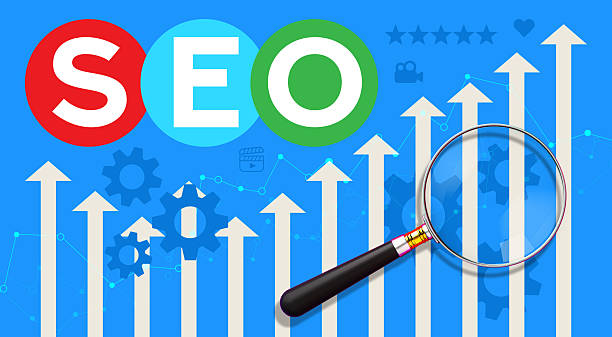
In today’s highly competitive world, an effective online presence is vital for any business.
Among these, #SEO (Search Engine Optimization) plays a pivotal role.
SEO is divided into two main sections: On-page SEO and Off-page SEO.
While On-page SEO focuses on optimizing elements within your website, Off-page SEO refers to activities performed outside your website, aiming to increase your site’s authority and ranking in search engines.
The primary and most important activity in the Off-page SEO section is link building or backlink building.
In this educational section, we explain why Off-page SEO is so important.
Search engines like Google consider websites that receive links from authoritative and relevant sources to be more trustworthy and credible.
This directly impacts your site’s ranking in search results.
As a general explanation, Off-page SEO can be considered a vote of confidence from other websites for your content.
The more numerous and authoritative these votes are, the more relevant Google deems your site for target keywords.
This guiding process helps you improve your online credibility and ultimately leads to increased organic traffic and greater visibility.
In essence, correct strategies in off-page optimization can bridge the gap between being seen or overlooked in the competitive web space.
This section forms the foundation of our understanding of the concept of this vital process.
Losing business opportunities due to an outdated website? With Rasawb, permanently solve the problem of not attracting potential customers through your website!
✅ Attract more high-quality leads
✅ Increase brand credibility in customers’ eyes
⚡ Get free consultation for corporate website design
What is a Backlink and Why is it the Cornerstone of Off-Page SEO?

A backlink, also known as an inbound link or incoming link, is a link from one website to another.
Simply put, when website “A” links to website “B”, this is considered a backlink for website “B”.
In the field of Off-page SEO, backlinks hold special importance and can be considered the backbone of off-page SEO strategies.
The reason for this importance can be found in how Google’s ranking algorithms work.
Google considers backlinks as a vote of confidence; every link given to your site somehow indicates the credibility and value of your content.
The more numerous and higher quality the inbound backlinks to your site, the more credible and trustworthy Google perceives your site to be, and consequently, it improves its ranking in search results.
This is an expert view on the performance of search engines.
The quality of backlinks is as important as their quantity.
A backlink from a highly authoritative and relevant website is worth far more than dozens of backlinks from low-quality and irrelevant websites.
This provides a precise analytical breakdown of Google’s ranking criteria.
For this reason, successful Off-page SEO strategies focus on acquiring high-quality backlinks from authoritative sources.
This explanatory process is essential for understanding the depth of backlinks and their place in off-page website optimization, helping to correctly grasp the importance of this key element in SEO campaigns.
Without strong backlinks, achieving high rankings in search results will be very difficult.
Types of Link Building in Off-Page SEO and Best Practices
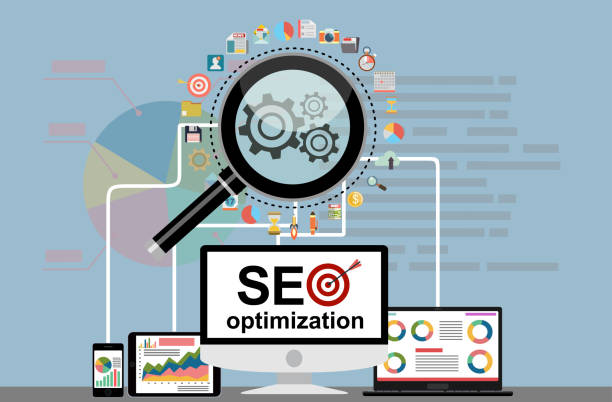
Link building, or creating backlinks, is the core activity of Off-page SEO, and there are numerous methods to achieve it.
Each of these methods has its own advantages and disadvantages, and choosing the best strategy depends on your business type, available resources, and goals.
One of the most common methods is white-hat link building through valuable content creation.
When your content is so useful and engaging that other websites naturally link to it, this is considered the most valuable type of backlink.
Entertaining, educational, and expert content can naturally attract high-quality links.
Another method is Guest Posting; in this approach, you write articles for other websites related to your field of work and, in return, receive a link to your website.
Building links from directories, forums, and social networks are also other methods, although the quality of these links is usually lower.
Broken Link Building and competitor backlink analysis are also effective strategies that guide you in finding link-building opportunities.
It is important that link building is done naturally and with the aim of improving user experience, not just to manipulate algorithms.
| Link Building Method | Description | Credibility and Risk Level |
|---|---|---|
| High-Quality Content Creation | Creating valuable content that naturally attracts links. | High / Very Low |
| Guest Posting | Writing articles for other websites and receiving a link. | Medium to High / Medium |
| Broken Link Building | Finding broken links on other sites and suggesting your content. | Medium to High / Low |
| Forums and Directories | Placing links in forums and web directories. | Low / Medium |
| Buying Links | Purchasing links from other websites. | Very Low / Very High (Prohibited) |
It should be noted that Google strongly combats unnatural and black-hat link building, so focusing on sustainable and ethical methods in your website’s off-page optimization is essential for long-term success.
Choosing the right strategies and implementing them precisely is key to achieving sustainable results and organic traffic growth in the long run.
Anchor Text and Its Role in Ranking Improvement

Anchor text refers to the clickable words in a hyperlink.
This text not only helps users better understand the content of the page being linked to, but also serves as an important signal for search engines regarding the topic of the destination page.
In Off-page SEO strategies, the correct use of anchor text is of high importance.
For example, if a link with the anchor text “best gaming laptops” is given to a page about the same topic, Google understands that the destination page is likely about gaming laptops and helps it in ranking for this keyword.
This is an expert principle in off-page optimization that many SEOs pay special attention to.
There are different types of anchor text:
- Exact Match: The anchor text is exactly the target keyword (e.g., “Off-page SEO”).
- Partial Match: Includes the keyword along with other words (e.g., “comprehensive guide to Off-page SEO”).
- Branded: Using the brand name as anchor text (e.g., “WordPress SEO”).
- Generic: Phrases like “click here” or “read more”.
- Naked URL: Direct use of the website address (e.g., “www.example.com”).
Diverse and natural use of anchor text types in off-page optimization is essential.
If all your backlinks use one type of anchor text (especially Exact Match), Google may identify it as a spam pattern and penalize your site.
Therefore, a guiding and balanced approach in this area is very important.
Analyzing questionable content regarding competitors’ anchor text distribution can also provide valuable insights and help you optimize your strategy.
The ultimate goal is to create a natural and strong backlink profile that sends positive signals to search engines and helps improve your site’s ranking over time.
Did you know that 94% of a company’s first impression is related to its website design?
Rasawb, by providing professional corporate website design services, helps you create the best first impression.
✅ Create a professional and trustworthy image for your brand
✅ Easier attraction of potential customers and improvement of online presence
⚡ Get free consultation for corporate website design
The Importance of Domain Authority (DA) and Page Authority (PA) in Off-Page SEO

Domain Authority (DA) and Page Authority (PA) are two important metrics developed by Moz to predict the credibility and ranking potential of a website or a specific page in search engine results.
Although these metrics are not directly used by Google, they are considered reliable indicators for gauging the strength and authority of a website in the field of Off-page SEO.
Domain Authority (DA) is a score given to the entire domain of a website, ranging from 1 to 100; the higher this score, the greater the website’s potential for ranking in search engines.
Page Authority (PA) is a similar score but applies to a specific page within a website.
In off-page optimization, paying attention to the DA and PA of websites when considering them for backlinks is very important.
Receiving backlinks from websites with high DA and PA sends a stronger signal to Google and significantly increases your site’s authority.
This indicates a deep analytical approach to selecting link-building sources.
A backlink from a site with DA 70 has far more value than several backlinks from sites with lower DA (e.g., DA 20).
In fact, quality here trumps quantity.
This is a key explanatory point for understanding the true value of backlinks.
However, do not rely solely on DA and PA.
The thematic relevance of the linking site to your site and the naturalness of the link are also very important.
For example, if a clothing store site receives a backlink from a technical website, even if it has a high DA, that link might have less impact.
Using tools like Moz Link Explorer or Ahrefs to check the DA and PA of different websites, as well as analyzing competitors’ backlink profiles, is an educational and effective approach.
By correctly understanding these metrics and how to apply them in off-page optimization strategies, you can take effective steps toward improving your site’s authority and ranking in search engines.
What is the Difference Between Nofollow and Dofollow Links, and Which is More Important?
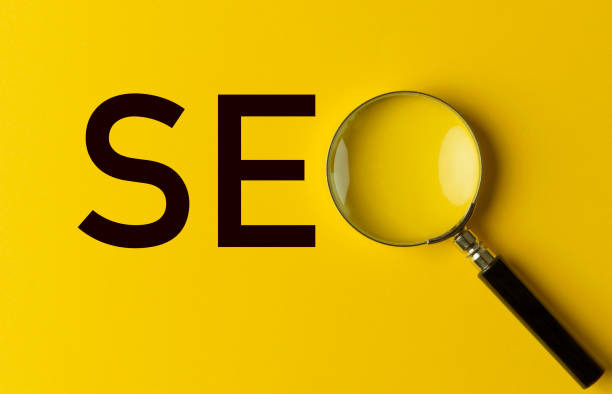
In the world of Off-page SEO, every backlink sends a message to search engines.
However, not all links are created equal, nor do they carry equal value.
The two main types of links you should know are “Dofollow” and “Nofollow” links.
The main difference between the two lies in how search engines treat them.
Dofollow Links: By default, these links pass “authority” or “Link Juice” from the source website to the destination website.
When Google encounters a Dofollow link, it follows it and transfers the authority of the source site to the destination site.
This transfer of authority is a positive signal for search engines and helps improve the ranking of the destination site.
For the purpose of Off-page SEO, these types of links are highly valuable and desirable.
This is an expert topic in link building, and understanding it is crucial for every SEO professional.
Nofollow Links: These links are specified using the tag `rel=”nofollow”` in the HTML code.
When a link is Nofollow, search engines are instructed not to follow this link and not to pass any authority or Link Juice to the destination site.
Nofollow links are commonly used in blog comments, forums, social networks (like profile links), and some news websites to prevent spam abuse.
However, this does not mean that Nofollow links are entirely worthless.
They can still drive direct traffic to your website and help increase your brand awareness.
From an educational perspective, even Nofollow links are part of a site’s natural link profile, and their presence alongside Dofollow links can make it appear more natural.
In summary, for ranking purposes in off-page optimization, Dofollow links are far more important and effective because they directly impact your site’s authority and credibility.
However, a healthy and natural backlink profile includes a mix of both Dofollow and Nofollow links.
A comprehensive explanation shows that focusing solely on Dofollow links can appear unnatural and even lead to penalties.
Therefore, you should strive to create a balance in your link-building strategy and give both types of links their appropriate place in SEO campaigns.
Competitor Analysis Methods in Off-Page SEO for Gaining an Edge
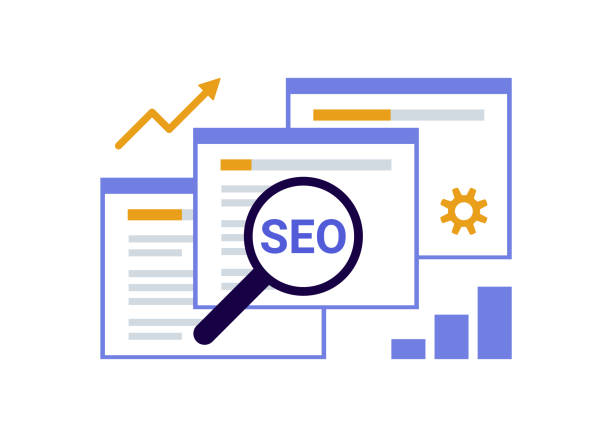
One of the key strategies in Off-page SEO, is the precise analysis of competitors’ backlink profiles.
By examining where competitors get their links, you can find new link-building opportunities for your website and formulate effective strategies to surpass them.
This is an analytical approach that helps you gain a deeper understanding of your competitive landscape.
To start, prepare a list of your top 10 competitors who rank well for your target keywords.
Then, with the use of reputable SEO tools like Ahrefs, Semrush, Moz Link Explorer, or Majestic, examine their backlink profiles.
These tools allow you to:
- Backlink Sources: See which websites competitors have received links from.
- Link Types: Determine whether the links are Dofollow or Nofollow.
- Anchor Text: Examine what anchor texts competitors are using.
- Domain Authority (DA) and Page Authority (PA) of Linking Sites: Evaluate the credibility of their link sources.
- Lost Links: Identifying links that competitors previously had and have now lost can create opportunities for you.
After gathering this information, look for patterns and opportunities.
Are there some websites that have linked to several of your competitors but not to you? These can be good targets for your link building.
Have competitors attracted links through guest posting, influencer collaborations, or public relations? This can provide guidance for your strategy.
| Criterion | Importance | Key Points |
|---|---|---|
| Number of Backlinks | Overall quantity of links | Important but not sufficient alone |
| Quality of Linking Domains | DA/PA and credibility of source sites | Most crucial factor in Off-Page SEO |
| Thematic Relevance of Links | The degree of relevance of the linking site to your business | Very important for natural authority |
| Anchor Text Diversity | Use of various anchor text types | To make the link profile appear natural |
| Link Building Speed | Rate of acquiring new links | Natural and consistent growth is recommended |
Regular competitor analysis is an ongoing process that helps you stay aware of the latest Off-page SEO trends and update your strategies to maintain a competitive advantage.
This expert approach will assist you in achieving sustainable success in search results.
Google Penalties and How to Avoid Them in Off-Page SEO
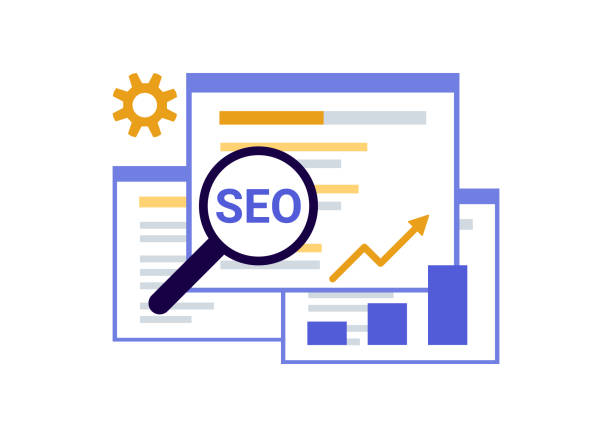
Google constantly strives to provide the best and most relevant results to its users.
For this reason, its algorithms are continuously updated to identify and penalize websites that attempt to manipulate search results using unethical methods.
These penalties, known as “Google Penalties,” can have a devastating impact on your website’s ranking and traffic.
In the realm of Off-page SEO, penalties mainly stem from unnatural and manipulated link building.
An unfortunate news item for many sites was Google’s announcement about algorithms like Penguin, which specifically targeted unnatural link profiles.
Types of Off-Page SEO Penalties:
- Spammy and Low-Quality Links: Buying links, excessive link exchange, or using low-quality link networks.
- Links from Link Farms: Websites designed solely to generate links with no valuable content.
- Over-optimized Anchor Texts: Repeated use of the exact target keyword in the anchor text of all backlinks, which appears unnatural.
- Paid Links without Nofollow Tag: Buying links without using the Nofollow tag, which Google considers a violation.
To avoid these penalties, the most important explanation that can be provided is to always focus on natural and high-quality link building.
Prioritize link quality over quantity.
A guiding principle to prevent penalties is to:
- Only obtain links from reputable and relevant websites.
- Build links naturally and avoid rushing to create a large number of links.
- Maintain diversity in anchor texts.
- Regularly check your backlink profile with SEO tools and identify suspicious or spammy links, disavowing them using Google’s Disavow tool.
If your site has already been penalized, the recovery process can be time-consuming and challenging.
First, you must identify the cause of the penalty and then remove or disavow all harmful links.
After making corrections, you should submit a Reconsideration Request to Google via Google Search Console.
This process requires an expert and patient approach.
Ultimately, focusing on off-page optimization through white-hat and ethical methods is the best guarantee for long-term success and avoiding Google penalties.
Are you dissatisfied with the low visitor-to-customer conversion rate on your e-commerce website?
Solve this problem permanently with professional e-commerce website design by Rasawb!
✅ Increase visitor-to-customer conversion rate
✅ Create an excellent user experience and build customer trust
⚡ Get free consultation
The Role of Social Networks and Branding in Off-Page SEO Strategy
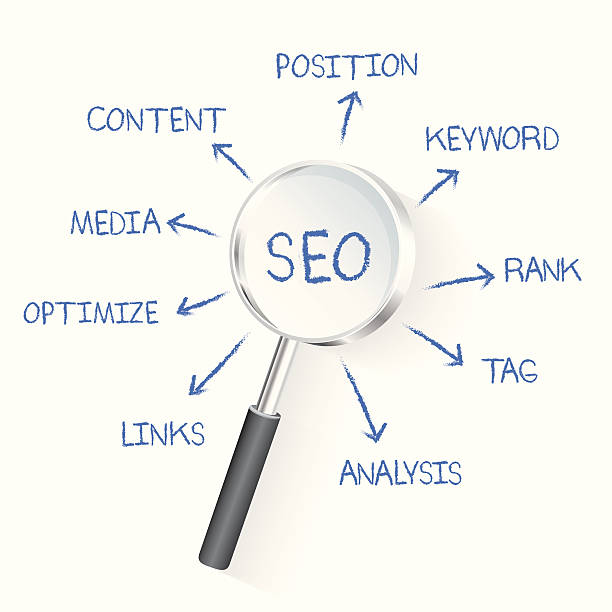
At first glance, it might seem that activity on social networks and branding do not directly affect off-page SEO, as most social media links are Nofollow and do not pass link juice.
However, with a deeper analytical perspective, we realize that these activities can have an indirect but powerful impact on your Off-page SEO strategy.
Increased Visibility and Traffic: Sharing your content on social networks can lead to increased content visibility and, consequently, increased referral traffic to your website.
More traffic, even if through Nofollow links, can be a positive signal for search engines, indicating the popularity and relevance of your content.
Increased Brand Awareness and Direct Searches: Active participation in social networks helps build and strengthen your brand.
The more recognized and credible your brand is, the more likely people are to search for your brand name directly on Google.
An increase in direct brand searches and direct website traffic is a strong signal of popularity and authority for Google, which can help improve your overall ranking.
Indirect Link Building Opportunities: Social media activity can indirectly create Dofollow link-building opportunities for you.
For example, if your content goes viral on social networks and gains attention from influencers or news websites, the likelihood of them naturally linking to your content with a Dofollow link increases.
This is an entertaining yet effective approach to attracting high-quality links.
Strengthening Social Signals: Although Google does not directly include social signals in its ranking algorithm, high popularity and sharing of content on social networks can help accelerate the process of identifying and indexing new content.
This is a complete explanation of how social networks influence SEO.
Therefore, integrating content marketing strategies, Off-page SEO, and social media activities provides a comprehensive and powerful approach to improving your website’s visibility in search engines.
Focusing on creating valuable content that is both engaging for users and has high sharing potential is key to success in this area.
The Future of Off-Page SEO and Upcoming Trends
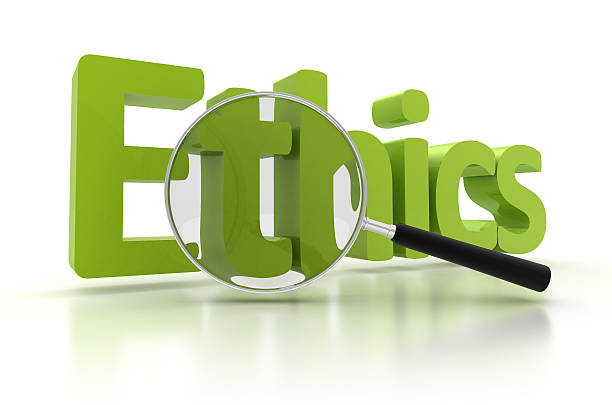
The world of SEO is constantly changing and evolving, and Off-page SEO is no exception.
With each Google algorithm update, the focus and priorities shift.
To succeed in the future, it is essential to be aware of upcoming trends and adjust your strategies accordingly.
An important news point is that Google is increasingly emphasizing the quality and naturalness of links and strictly shuns spammy methods.
Increased Focus on Quality and Relevance: In the future, the importance of the quality and thematic relevance of backlinks will become even greater.
Google can easily identify links created solely to manipulate rankings.
Therefore, focusing on obtaining links from reputable, relevant, and high-authority websites will be more crucial than ever.
This is an analytical perspective that must be considered in any new strategy.
Branding and Online Reputation: As mentioned earlier, branding and online reputation have an indirect impact on off-page optimization.
In the future, search engines will pay more attention to branding signals and a business’s overall online presence.
Brand Mentions, even without a direct link, can be considered a signal of authority and popularity.
Therefore, investing in public relations, content marketing, and online activities that help strengthen your brand will be very important.
This topic raises questionable content for many SEOs about whether it’s time to change the traditional view of link building.
User Experience and Immersive Content: Although User Experience (UX) is mostly related to On-page SEO, it indirectly affects Off-page SEO as well.
Websites with good UX and excellent content are more likely to be shared and linked to by others.
In the future, immersive and multimedia content that engages users and encourages them to share will play a significant role in attracting natural links.
This is an expert strategy that requires coordination between content and SEO teams.
Ethics in Link Building: Black-hat link-building approaches are gradually becoming obsolete, and the risk of penalties will become much higher.
SEOs must fully adhere to ethical and sustainable link-building methods to achieve long-term and stable results for websites.
The future of Off-page SEO belongs to those who focus on real value, quality, and relevance, not on manipulating algorithms.
This is a fundamental guidance for the path ahead for SEO professionals.
Frequently Asked Questions
| Row | Question | Answer |
|---|---|---|
| 1 | What is Off-Page SEO? | Off-Page SEO refers to a set of actions performed outside your website to improve its ranking in search engines. These actions include backlink building, social media presence, branding, and so on. |
| 2 | Why is Off-Page SEO of high importance? | Off-Page SEO shows search engines that your website is authoritative, popular, and trustworthy. High-quality backlinks from reputable sites are strong signals for better rankings and help increase your domain authority. |
| 3 | What are the most important components of Off-Page SEO? | The most important components of Off-Page SEO include: Link Building, Content Marketing, Social Media Marketing, Influencer Marketing, and Online Reputation Management. |
| 4 | What is a backlink and why is it important for Off-Page SEO? | A backlink (Backlink) is a link that points from another website to your website. These links act as “votes of confidence” in Google’s eyes and indicate the credibility of your content. The higher the number and quality of backlinks, the better your site’s ranking will be. |
| 5 | What are the types of backlinks in terms of SEO impact? | The two main types of backlinks are DoFollow and NoFollow. DoFollow backlinks pass authority (Link Juice) and directly impact ranking. NoFollow links do not pass authority but can still generate traffic and help make the link profile appear natural. (Also UGC and Sponsored) |
| 6 | How can high-quality backlinks be created for your site? | To build high-quality backlinks, methods such as: creating excellent and shareable content, Guest Posting on relevant and reputable sites, Broken Link Building, Digital PR, and analyzing competitors’ backlinks can be used. |
| 7 | What are Toxic Backlinks and how do they affect a site? | Toxic or spammy backlinks are links that point to your site from low-quality, spammy, or irrelevant websites. These backlinks can harm your site’s ranking and even lead to penalties by Google’s algorithms. |
| 8 | What is the role of social networks in Off-Page SEO? | Although social signals (likes, shares, etc.) are not direct ranking factors, they help Off-Page SEO. They increase content visibility, drive direct traffic to the site, and ultimately increase the chances of acquiring natural backlinks and improving brand recognition. |
| 9 | What is the importance of diversity in a backlink profile? | Diversity in a backlink profile means that your links come from various sources (blogs, forums, news sites, directories), with diverse anchor texts, and with a combination of DoFollow and NoFollow links. This diversity signals to Google that your link building is natural and organic. |
| 10 | What are common mistakes in Off-Page SEO that should be avoided? | Common mistakes include: buying backlinks in large volumes from low-quality sources, excessive link building with target keywords (Over-optimization), neglecting quality in favor of quantity in backlink building, lack of diversity in the link profile, and ignoring toxic backlinks and not disavowing them. |
And other services of Rasawb Advertising Agency in the field of advertising
Smart Digital Branding: Designed for businesses seeking digital branding through intelligent data analysis.
Smart UI/UX: A new service to increase user engagement through an SEO-driven content strategy.
Smart Custom Software: Transform campaign management with the help of intelligent data analysis.
Smart Digital Branding: A fast and efficient solution to increase website traffic with a focus on attractive user interface design.
Smart Data Analysis: A combination of creativity and technology for online growth through Google Ads management.
And over a hundred other services in the field of internet advertising, advertising consultation, and organizational solutions
Internet Advertising | Advertising Strategy | Advertorial
Sources
Off-page SEO TrainingWhat is Off-page SEO?Off-page SEO – YektanetComplete Guide to Off-page SEO
? Are you looking for a big leap in the digital world? “Rasawb Afarin” Digital Marketing Agency, specializing in Search Engine Optimization (SEO), professional social media management, and user-friendly website design, guides your business towards success. With us, have a powerful and lasting online presence.
📍 Tehran, Mirdamad Street, next to Bank Markazi, Southern Kazeroon Alley, Ramin Alley No. 6




